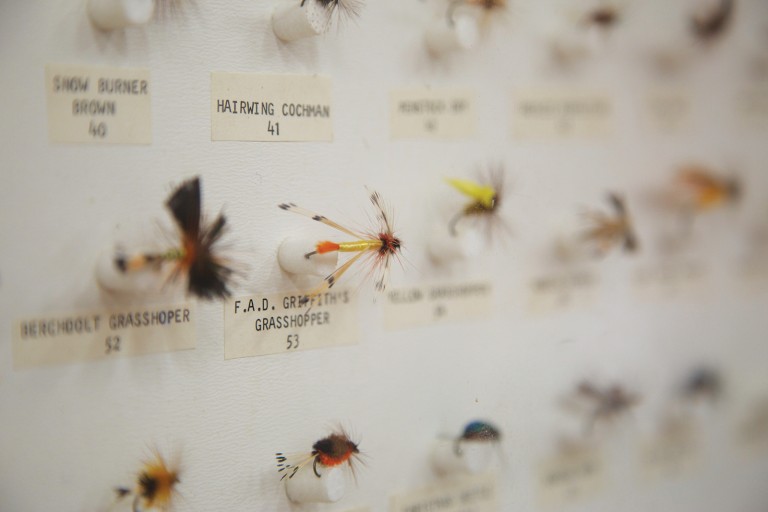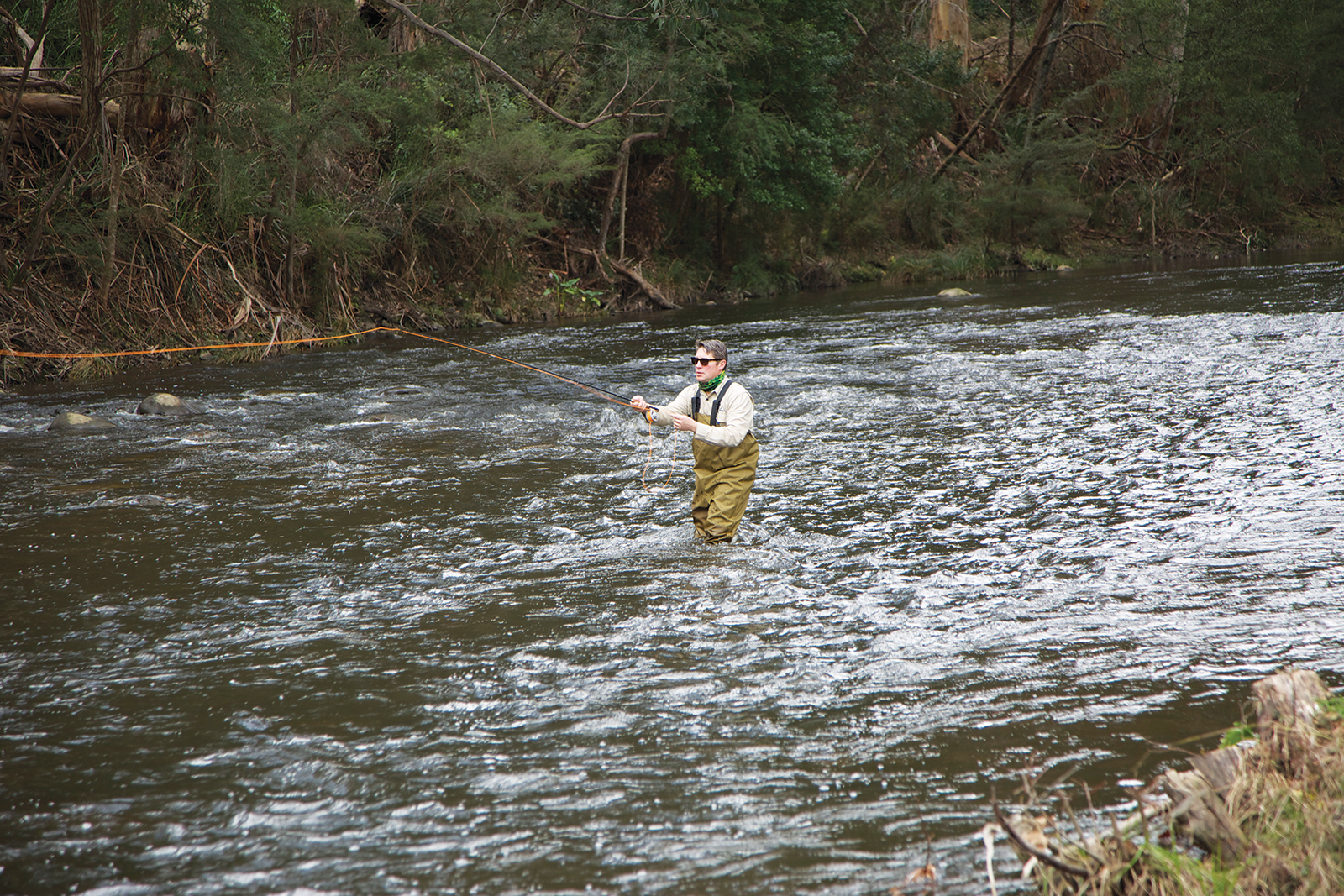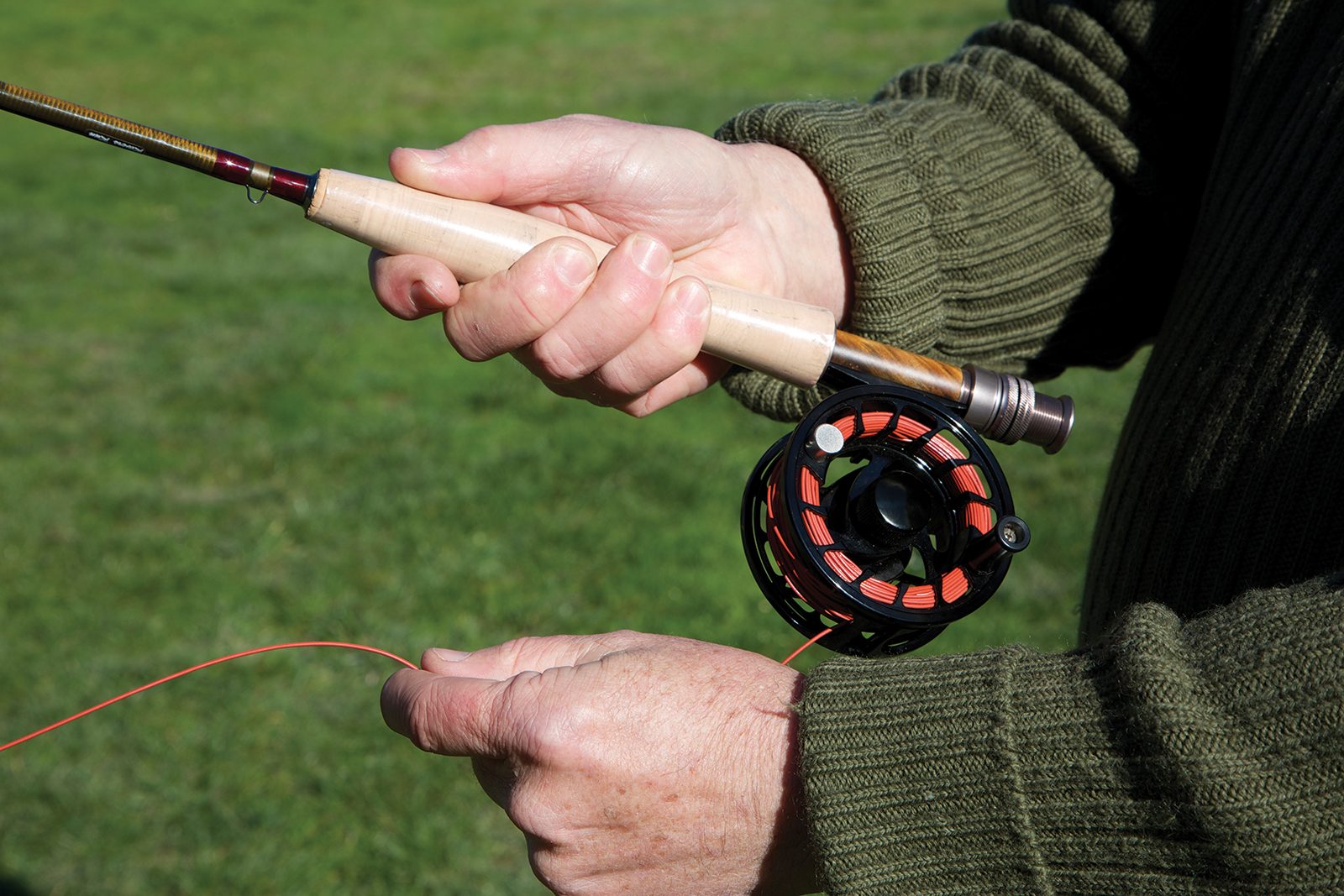The Yarra Ranges’ rivers and lakes are a fly fisher’s haven. Heather Zubek dons the waders to immerse herself in the sport’s quiet, contemplative joys.
I’m standing in a small pocket of the Yarra River just outside Warburton. The waders I’m wearing are a little too snug but they are keeping me dry. The swirling waters are beyond freezing, coming straight from the snow-covered mountains nearby. I’m here to discuss fly-fishing with David Szabo, the owner of Warburton Fly Fishing, who is fully engaged with the river and the graceful dance of the rod.
“If catching fish is all that drives you,” said David as he made another cast, “you’re missing the whole point. Fly fishing is a skill that pays you back over a lifetime, it boosts your health and powers of observation and it is just great for the brain.” David teaches fly fishing. He has taken corporate high-flyers, granddads with their grandsons and military personnel looking for stress relief out into the river to not only discover the joys of fly fishing, but also to discover themselves. “To me, fly fishing is all about mindfulness, about engaging with the moment,” he said. “Catching the fish just adds to the experience.”
A one-time corporate high-flyer himself, David gave up the rat race and moved to Warburton to exchange his office for the river. “When I was in university and in business I used to come up to Warburton and think ‘how can I live up here?’ Friends would tell me that I was too much of a city slicker to stand it but 12 years down the track I wouldn’t be anywhere else.”
The Yarra Ranges are a magnet for fly fishers and trout. The alpine streams cascading through small townships and farmland, combined with the smorgasbord of insect life for the fish, are a match made in fishing heaven. For David, the best time of year for fly fishing in Warburton is mid-October to early December. “The best fishing here occurs after high water levels followed by about four days of warm, dry weather. If you can get this timing right you can strike gold.”
Wednesday night is fly tying night at the Yarra Valley Fly Fishers clubhouse alongside Lilydale Lake. A dozen men sit behind triffid-like vices with outsized sewing boxes filled with coloured thread and feathers at their feet. I watched as they created delicate works of art designed to imitate local insect life to lure unsuspecting fish into battle. This was serious business. That night I received my first real lesson in fly fishing: nothing gets between a fly fisher and their sport.
The men, and the few women, of the Yarra Valley Fly Fishers club have a unique knowledge of the fishing lakes and streams of the Yarra Ranges. But don’t ask them exactly where they fish. Revealing the location of their favourite fishing spot is akin to telling you their ATM PIN. You would be lucky to get “a little spot just outside of Marysville”.
Trevor Jacobson, president of Yarra Valley Fly Fishers, has been fishing the rivers and lakes in and around the Yarra Ranges since he was a kid. He is passionate about the sustainability of the fish he delights in catching as well as the club he loves. “At one time we would have filled the room with people doing fly tying on a Wednesday night,” he said looking around the spacious clubhouse. “But with the drought drying up many of the streams a few years ago the numbers have dropped off.”
The club is slowly regaining its numbers and has an event calendar filled with workshops on fly tying and casting. There are guest speakers, weekend trips and family fishing days as well as “come and try” events. The members are also eager participants in travel expos and festivals. “Every Sunday the club runs free casting workshops,” said Trevor. “There are usually a dozen or so people in the park next door learning or practising the art of casting. We even provide the rods.”
The clubroom, adjacent to the clubhouse, is a shrine to the trout. A striking boardroom table, hand-carved with flies particular to the Yarra Ranges, dominates a room lined with display cases of photos and stuffed trout, reminders of memorable battles. There is a well-used library as well as glass displays containing dozens of flies. Members come in and out of the room discussing the ones that got away or their plans to revisit a favourite spot along a river. Trevor is keen to point out that the club embraces the “catch and release” program. “We encourage our members to catch one or two for the pan but to release the rest for the future of our lakes and rivers,” he said. “That’s important for sustainable fishing as well as for the future of the club.”
Brad Owens, a secondary mathematics teacher, took up fly fishing a mere four years ago but seems to have been hooked, given the photo of the rather impressive fish that sits on his desk at school. “A few years ago my brother-in-law and I started watching the television show On the Fly and we both thought we’d give it a go.” The pair bought a cheap fly rod each and went to the Alpine Trout Farm in Noojee to test them out. “That was it,” said Brad, “I was hooked from the first cast.”
In true fishing tradition he would not reveal the location of his favourite fishing spot, but he did divulge that he and his brother-in-law use Marysville as a base, moving on to Buxton and the Stephenson River. “There is nothing else quite like fly fishing,” he said. “You’re always thinking of the next cast. No matter how stressed you are fly fishing can relax you.” Brad said he had never met a fly fisher he didn’t like. “Everyone from the owners of the tackle shops to the people you meet on the river all seem so friendly. No one walks past without stopping for a chat. The sport seems to attract a different type of person. The great thing about fly fishing is that it’s not too hard to learn but it does take a lifetime to master.”




